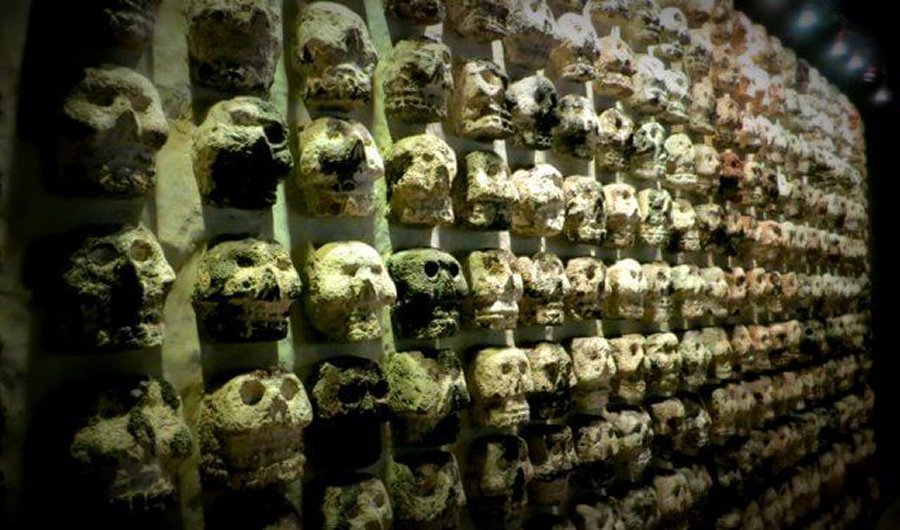Templo Mayor – Sacred Aztec Complex Dedicated To Gods Tlaloc And Huitzilopochtli Who Were Usually Appeased With Human Sacrifices
A. Sutherland - AncientPages.com - Most important sacred temple complex of the Aztecs - the Main Temple (in Spanish: Templo Mayor) was built in the center of the Aztec capital Tenochtitlán.
According to Aztec chronicles, the first temple (later followed by its twin temple) was built after 1325 and enlarged several times over the course of the 14th and 15th centuries.
Wall of skull’s. Image: Museo del Templo Mayor
The twin temples were dedicated to god of rain and fertility, Tlaloc ("the one who makes sprout") and Huitzilopochtli, god of war and sun.
Aztec chronicles confirm that both gods were frequently appeased with human sacrifices and other public rituals that took place in the temple.
Templo Mayor was shaped like a pyramid and its ruins are still in the city of Mexico. These temples, about 60 m (180 ft) above the level of the square at the foot of the pyramid, After conquering the city in 1521, the Spaniards almost completely destroyed the temple complex as a symbol of pagan worship.
In 1978, a carved, circular Aztec stone, depicting the mythical being Coyolxauhqui dismembered and decapitated, was accidentally discovered in the ruins of the Templo Mayor of Tenochtitlan, now in Mexico City.
The discovery prompted excavations at the site, which revealed the remains of superimposed temples forming the most sacred place in Tenochtitlán, during the greatness of the Aztec Empire – Temple Mayor.
It has been unearthed sacrificial deposits and offerings containing more than 7,000 different objects related to the site, such like clay pots depicting god Tlaloc, skeletons of turtles, frogs, crocodiles, and fish, snail shells, coral, some gold, alabaster, Mixtec figurines, ceramic urns, effigies, masks, copper rattles, decorated skulls and obsidian knives used during sacrifices.
Tlaloc god of rain, earthly fertility, water who could send thunder, hail, lightning. Image credit: Museo del Templo Mayor
To the Aztecs, death was the continuation of creation, and gods and humans alike had the responsibility of sacrificing themselves in order to allow life to continue.
Many cultures sacrificed people to their gods, also throughout Mesoamerica, but the Aztecs were infamous for their sacrificial rituals.
Depiction of a ‘tzompantli’ ("skull rack"), right half of image; associated with the depiction of Aztec temple dedicated to the deity Huitzilopochtli. From the 1587 Aztec manuscript, the Codex Tovar. Image: via Wikipedia
It was important to keep these important gods in a good mood. Tlaloc gave rain, which was crucial for agricultural activities but he also could send disastrous floods, storms and droughts. Huitzilopochtli, the supreme god and patron of Tenochtitlan, was also an important figure.
Offerings in form of flowers, food, golden objects were not good enough, to earn the gods’ favor.
Therefore, during specific holidays according to the Aztec calendar, bloody human sacrifices were offered to appease the gods and guarantee the prosperity of the Aztec society.
Sacrificial victims (mostly prisoners of war, but also children) were tied face up to a special stone before being killed with an obsidian knife. After sacrifice, the priests sprinkled the statues of the gods with blood and threw the hearts into a stone bowl with drainage channels. The body of the victim would be thrown down the staircase of the temple.
Templo Mayor complex also contained other, smaller buildings, platforms and ramps surrounding the main pyramid. The entrance leading to the top of the main pyramid was decorated with ‘tzompantli’, wooden scaffolding on which skulls of previously made victims were put - prisoners, slaves, children, as well as losers in a ritual ball game.
Written by – A. Sutherland AncientPages.com Staff Writer
Copyright © AncientPages.com All rights reserved. This material may not be published, broadcast, rewritten or redistributed in whole or part without the express written permission of AncientPages.com
Expand for referencesReferences:
José Luis de Rojas, Tenochtitlan: Capital of the Aztec Empire
Eduardo Matos Moctezuma E. M. Life and Death in the Templo Mayor
More From Ancient Pages
-
 Beautiful Legends Of The Great Smoky Mountains: The Cherokee’s Little People Nunnehi And The Medicine Lake Ataga’hi
Myths & Legends | Jul 10, 2024
Beautiful Legends Of The Great Smoky Mountains: The Cherokee’s Little People Nunnehi And The Medicine Lake Ataga’hi
Myths & Legends | Jul 10, 2024 -
 Ancient City Of Koh Ker Was Occupied Much Longer Than Previously Thought
Archaeology | Oct 12, 2018
Ancient City Of Koh Ker Was Occupied Much Longer Than Previously Thought
Archaeology | Oct 12, 2018 -
 Pryor Mountains Are Home To The Mysterious Little People – Native Americans Say
Featured Stories | Aug 2, 2021
Pryor Mountains Are Home To The Mysterious Little People – Native Americans Say
Featured Stories | Aug 2, 2021 -
 Mystery Of The Ancient Talayot Sword
Archaeology | Sep 30, 2019
Mystery Of The Ancient Talayot Sword
Archaeology | Sep 30, 2019 -
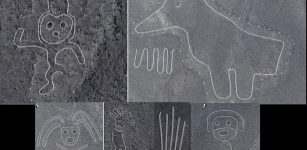 168 Unknown Geoglyphs Discovered In The Nazca Desert By Drones
Archaeology | Dec 19, 2022
168 Unknown Geoglyphs Discovered In The Nazca Desert By Drones
Archaeology | Dec 19, 2022 -
 Circe: Powerful Divine Sorceress Who Mastered Healing, Miracles And Transforming People Into Animals In Greek Mythology
Featured Stories | Aug 12, 2023
Circe: Powerful Divine Sorceress Who Mastered Healing, Miracles And Transforming People Into Animals In Greek Mythology
Featured Stories | Aug 12, 2023 -
 Evidence Of Early Metalworking In Arctic Canada – European Technologies Involved
Archaeology | Dec 7, 2014
Evidence Of Early Metalworking In Arctic Canada – European Technologies Involved
Archaeology | Dec 7, 2014 -
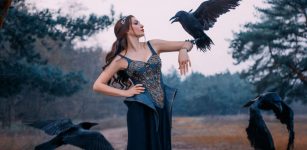 Morrígan: Shape-Shifting Phantom Queen And Her Meeting With Irish Hero Cuchulainn
Celtic Mythology | Aug 7, 2017
Morrígan: Shape-Shifting Phantom Queen And Her Meeting With Irish Hero Cuchulainn
Celtic Mythology | Aug 7, 2017 -
 48,000-Year-Old Tooth That Belonged To Neanderthal Child Found In Northern Italy
Fossils | Sep 19, 2020
48,000-Year-Old Tooth That Belonged To Neanderthal Child Found In Northern Italy
Fossils | Sep 19, 2020 -
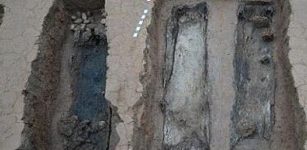 Large Collection Of 2,200-Year-Old Tombs With Boat Coffins Made Of Nanmu Wood, Unearthed In SW China
Archaeology | Feb 10, 2017
Large Collection Of 2,200-Year-Old Tombs With Boat Coffins Made Of Nanmu Wood, Unearthed In SW China
Archaeology | Feb 10, 2017 -
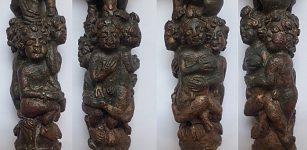 Roman Britain Executions Revealed – New Evidence
Archaeology | Aug 14, 2021
Roman Britain Executions Revealed – New Evidence
Archaeology | Aug 14, 2021 -
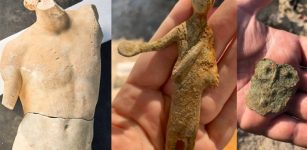 Magnificent 2 Meters Tall Marble Apollo Statue And Other Artifacts Found In San Casciano dei Bagni, Italy
Archaeology | Nov 20, 2023
Magnificent 2 Meters Tall Marble Apollo Statue And Other Artifacts Found In San Casciano dei Bagni, Italy
Archaeology | Nov 20, 2023 -
 200,000-Year-Old Stone Engravings Found In Marbella Could Rewrite The History Of Prehistoric Art
Archaeology | Mar 17, 2025
200,000-Year-Old Stone Engravings Found In Marbella Could Rewrite The History Of Prehistoric Art
Archaeology | Mar 17, 2025 -
 Magnificent Meteora And ‘Suspended In The Air’ Greek Monasteries
Featured Stories | May 5, 2021
Magnificent Meteora And ‘Suspended In The Air’ Greek Monasteries
Featured Stories | May 5, 2021 -
 Strange Ancient Sky Phenomenon – It Was Not A ‘Natural’ Space Object – Scientist Said
Ancient Mysteries | Nov 5, 2019
Strange Ancient Sky Phenomenon – It Was Not A ‘Natural’ Space Object – Scientist Said
Ancient Mysteries | Nov 5, 2019 -
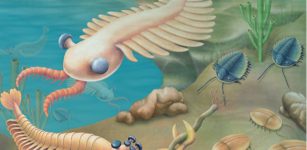 Connection Between Viruses And Ancestors Of All Complex Life Has Been Found
Archaeology | Jul 1, 2022
Connection Between Viruses And Ancestors Of All Complex Life Has Been Found
Archaeology | Jul 1, 2022 -
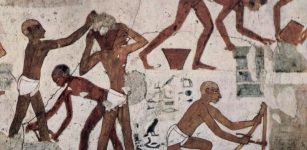 World’s First Documented Labor Strike Took Place In Ancient Egypt In The 12th Century BC
Ancient History Facts | Jun 7, 2016
World’s First Documented Labor Strike Took Place In Ancient Egypt In The 12th Century BC
Ancient History Facts | Jun 7, 2016 -
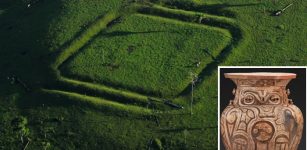 Were Mysterious Ancient Man-Made Earthworks In The Amazon Forest Ritual Communication Spaces?
Archaeology | Sep 6, 2017
Were Mysterious Ancient Man-Made Earthworks In The Amazon Forest Ritual Communication Spaces?
Archaeology | Sep 6, 2017 -
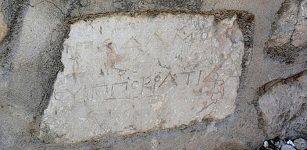 2,300-Year-Old Tablet Found In Mugla, Turkey – Region Of Great Historical Importance In Ancient Times
Archaeology | Jun 5, 2019
2,300-Year-Old Tablet Found In Mugla, Turkey – Region Of Great Historical Importance In Ancient Times
Archaeology | Jun 5, 2019 -
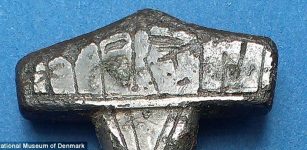 Remarkable Discovery Of Unusual “Hammer Of Thor” Finally Solves An Ancient Mystery
Archaeology | Jul 2, 2014
Remarkable Discovery Of Unusual “Hammer Of Thor” Finally Solves An Ancient Mystery
Archaeology | Jul 2, 2014

